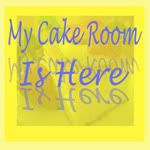I thought as English Lardy cake is an Iconic English Spiced bread I thought it would be interesting to fans of English Food to know It's recipe and history. Lardy cake is also called Lardy bread, Lardy Johns, Dough cake and Fourses cake and originates from Wiltshire. In the West Country and dates from the 15th. Century. Today local bakers still make it to their own recipes, cramming in as much lard, sugar and fruit as they or their customers choose.
The lardy cake relates back to the 15thCentury Lardy bread, Lardy Johns, Dough cake and Fourses cake. At the 'Old English Fair' was an eagerly awaited event by town and countrymen who would get together to sell their wares. Gingerbread and Plum Cake became established products at these fairs, with the Lardy Cake being an adapted version of the later.
The major difference between the two products was that the fat (lard) was layered into the dough similar to Danish Pastry.
Today a equal mixture of lard and brown sugar are layered in at approximately 20% of the dough weight. The fermented dough also contains fruit and will also be spiced.Recipeand Ingredients
20 Gram Yeast fresh (1 3/4 tsp dried + pinch of sugar) (3/4 oz)
450 ml Water, warmed (3/4 pint)
600 Gram Strong white flour (1 1/4 lb)
1 1/4 Teaspoon Salt
100 Gram Lard, diced (4 oz)
100 Gram Butter, diced (4 oz)
240 Gram Mixed sultanas and currants (10 oz)
65 Gram Chopped mixed peel (3 oz)
65 Gram Sugar (3 oz)
Makes 16 slices
Method
Preheat oven to 220 °C / 425 °F / Gas 7. Grease a 20 x 25 cm (8 x 10 inch) roasting tin.
Put the flour and salt in a bowl and rub in 100g ( 4 oz) of the lard. Make a well in the centre and pour in the yeast liquid. Beat together to make a dough that leaves the sides of the bowl clean, adding more water if necessary. Turn on to a lightly floured surface and knead well for about 10 minutes, until smooth and elastic. Place in a clean bowl. Cover with a clean tea-towel and leave in a warm place for about 1 hour, until doubled in size.
Turn the dough on to a floured surface and roll out to a rectangle about 0.5 cm ( 1/4 inch) thick. Dot one-third of the remaining lard and butter over the surface of the dough. Sprinkle over one-third of the fruit, peel and sugar. Fold the dough in three, folding the bottom third up and the top third down. Give a quarter turn, then repeat the process twice more.
Roll the dough out to fit the prepared tin. Put in the tin, cover and leave in a warm place for 30 minutes, until puffy. Score the top with a criss-cross pattern with a knife, then bake for about 30 minutes, or until well risen and golden brown. Turn out and serve immediately or leave to cool on a wire rack. Once cooled this can be stores in a freezer until ready to warm up. It's best served plain or with butter.
Lardy Cake is really scrumptious hot or cold and once cooked can be kept in a freezer until ready to carve up and then warmed up prior to eating.
Please visit my Funny Animal Art Prints Collection @ http://www.fabprints.com
My other website is called Directory of British Icons: http://fabprints.webs.com
The Chinese call Britain 'The Island of Hero's' which I think sums up what we British are all about. We British are inquisitive and competitive and are always looking over the horizon to the next adventure and discovery.
Copyright © 2010 Paul Hussey. All Rights Reserved.
My family tree has been traced back to the early Kings of England from the 7th Century AD. I am also a direct descendent of Sir Christopher Wren which has given me an interest in English History and Icons which is great fun to research.
I have recently decided to write articles on my favourite subjects: English Sports, English History, English Icons, English Discoveries and English Inventions.
At present I have written over 100 articles which I call "An Englishman's Favourite Bits Of England" in various Volumes.
Please visit my Blogs page http://Bloggs.Resourcez.Comwhere I have listed all my articles to date.
Copyright © 2010 Paul Hussey. All Rights Reserved.




0 comments
Post a Comment